Posts Tagged ‘blog’

Just draw! Part 1: Getting back into drawing.
February 11, 2015
Above: Bob Dylan, “Still life with peaches”, mixed media on paper, 2007 Getting back into drawing At the best of times, drawing and creativity can seem wonderfully addictive. But there are inevitable periods in every artist’s life when the artwork just seems to stop happening for a while. Perhaps other aspects of life have […]
2015 | Blog | Tags: artist's block, blog

Composition dogs: part 3
November 6, 2014
Dogs and owners: Spaces between Above: “Eli and David”, by Lucian Freud, 2005-6. A portrait of David Dawson (Freud’s assistant and friend) with his whippet. I find “Eli and David” remarkable both as a powerful composition and for the way in which it demonstrates a key aspect of human-canine relationships. This man, painted with all his human flaws and concerns, […]
2014 | Blog | Tags: blog, Cassatt, composition, dogs, Freud, mythology, negative shapes, shapes
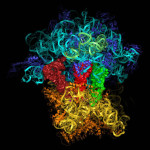
What can scientists learn from artists?
January 26, 2014
In comparing approaches to art and science, I notice that certain shared skills tend to be better taught to artists while others are addressed more clearly in science lessons. Let’s look, today, at aspects of the artistic approach that some scientists may find helpful. My intention here is not to be unfairly critical, but to trigger positive discussion. If you […]
2014 | Blog | Tags: art and science, blog, Leonardo

The essence of an object (2): The thing-ness of a thing
September 16, 2013
Above: Henri Matisse “Branch of a Judas Tree”, 1942, charcoal on paper, 25.2×39.4cm Writing in 1947 about some fig leaves that he was drawing, Matisse described how he was searching for the qualities that made them “almost unmistakably fig leaves”. He did not want to record exact copies of particular leaves, complete with their idiosyncratic […]
2013 | Blog | Tags: blog, Delacroix, essence, essence of an object, Ideal, Matisse, Plato, Zeki
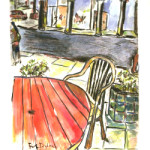
Perspective and emotion (3): Our place in the world
June 8, 2013
Above: Samuel Palmer “Sheltering from the storm”, 1846, watercolour and gouache Notice how often we use the term “perspective” in the English language when trying to convey our feelings. Take some examples: “Try to see this problem from my perspective“, i.e. “from my point of view” “A complete change of perspective“, meaning a change […]
2013 | Blog | Tags: blog, Bob Dylan, perspective, Samuel Palmer
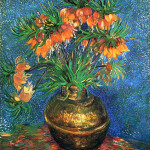
Perspective and Emotion (2): The space around an object
May 12, 2013
Above: Auguste Renoir flower painting, oils, 1901 An object in a painting can seem to have such a physical presence that I am stopped in my tracks. Whether a vase of flowers or a pair of shoes, the image may insist that it really is there, a solid presence in its own space. In this second […]
2013 | Blog | Tags: blog, Cezanne, perspective, Renoir, still life, Van Gogh
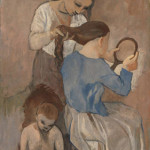
Perspective and emotion: Spaces between people
April 25, 2013
As artists we focus on ideas and emotions, so why should we bother with perspective? Above: Rembrandt “The Supper at Emmaus”, 1629, oil on panel. Art ideas are full of contradictions. Here is one example that fascinates me: Art itself is primarily about emotional concepts, yet artists are expected to master the technical challenges of perspective. With its ruled lines, vanishing points and […]
2013 | Blog | Tags: blog, figures, perspective, Picasso, Rembrandt, spaces between people, Van GoghComments (2)
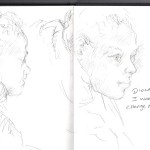
Sketchbook drawing: Girl begging on a train
March 13, 2013
It was snowing lightly on Sunday evening and I was on my way back home from Kings Cross. Ten minutes into the journey, a homeless girl came through my train begging for money. There was a long and awkward silence amongst the passengers in the carriage. People looked away nervously. I asked the girl if she’d mind being drawn, then […]
2013 | Blog, Sketches | Tags: blog, sketchbook

Why use cross-hatching?
March 2, 2013
A close look at cross-hatching as used by Picasso Above: Pablo Picasso “Visage” lithograph, 1928 Today I shall share some of my favourite Picasso drawings with you. While highly realistic, notice how each of these images also hints at mystery and emotional depth. This effect is partly due to Picasso’s use of cross-hatching techniques. How […]
2013 | Blog | Tags: blog, cross-hatching, PicassoComments (1)

Which colours recede, and which appear to come forward?
February 8, 2013
Have you ever noticed how some colours within a picture can give the impression of jumping out towards you, while others seem to melt back into the distance? Vivid, vibrant colours tend to be very prominent, especially when surrounded by dull greys and browns. Take, for example, the bright blue seafront house halfway along the row […]